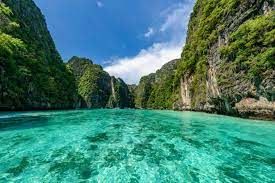Best Algae Treatment Solutions to Buy in December 2025
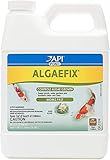
API POND ALGAEFIX Algae Control 32-Ounce Bottle, FISHAQUARI (169G)
- EFFECTIVELY CLEARS GREEN WATER & ALGAE FOR PRISTINE PONDS.
- SAFE FOR FISH, PLANTS, WILDLIFE & PETS WHEN USED AS DIRECTED.
- EASY DOSING: TREAT EVERY 3 DAYS; MAINTAIN WEEKLY FOR BEST RESULTS.


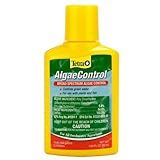
Tetra 77183 AlgaeControl, 1.69-Ounce, 50 ml
-
EFFECTIVELY CONTROLS ALGAE BLOOMS IN AQUARIUMS.
-
CLEANS GLASS & DÉCOR FROM HARMFUL ALGAE TYPES.
-
SAFE FOR FISH AND PLANTS WHEN USED AS DIRECTED.


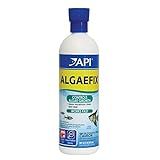
API ALGAEFIX Algae Control 16-Ounce Bottle
- FAST-ACTING SOLUTION FOR CONTROLLING GREEN WATER AND HAIR ALGAE.
- SAFE FOR FISH AND PLANTS WHEN USED AS DIRECTED-WORRY-FREE CARE.
- EASY DOSING EVERY THREE DAYS FOR QUICK RESULTS-HASSLE-FREE!


![Leslie's Algae Control Preventer for Pools 1 Quart [3 Bottles] 14025](https://cdn.blogweb.me/1/41i_NU_1_Jmx_L_SL_160_0f37337980.jpg)
Leslie's Algae Control Preventer for Pools 1 Quart [3 Bottles] 14025
![Leslie's Algae Control Preventer for Pools 1 Quart [3 Bottles] 14025](https://cdn.flashpost.app/flashpost-banner/brands/amazon.png)
![Leslie's Algae Control Preventer for Pools 1 Quart [3 Bottles] 14025](https://cdn.flashpost.app/flashpost-banner/brands/amazon_dark.png)
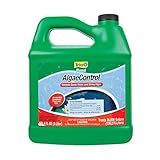
Tetra 77188 Algae Control Treats 36000 gallons, 101.4-Ounce
- EFFECTIVELY COMBATS ALGAE, ENSURING CRYSTAL-CLEAR POND WATER.
- SAFE FOR PLANTS AND FISH, PRESERVING YOUR POND'S ECOSYSTEM.
- ONE BOTTLE TREATS 36,000 GALLONS, DELIVERING HIGH VALUE.



Clorox® Pool&Spa™ Swimming Pool Algaecide and Clarifier, Prevents and Treats Pool Algae, Clears Water, 128 Fl Oz (Pack of 1)
- LONG-LASTING ALGAE DEFENSE KEEPS YOUR POOL CRYSTAL CLEAR AND CLEAN.
- NON-FOAMING FORMULA LETS YOU ENJOY YOUR POOL, HASSLE-FREE!
- COMPATIBLE WITH ALL POOLS, INCLUDING SALTWATER – VERSATILE AND RELIABLE!


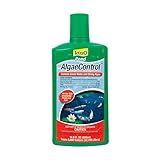
Tetra Pond AlgaeControl 16.9 Ounces, Controls Green Water And String Algae In Ponds (77187)
-
EFFECTIVELY CLEARS GREEN WATER & ALGAE FOR CRYSTAL CLEAR PONDS!
-
SAFE FOR FOUNTAINS & LINED PONDS: PROTECT YOUR WATER FEATURES!
-
EASY DOSAGE: JUST 10 ML PER 120 GALLONS FOR EFFECTIVE TREATMENT!


The one question that is asked of me most often is How do I get rid of this green algae? Algae tends to show its ugly face in early spring when the water temperature starts rising. Left over leaves, mulm, fish poop, etc. from Winter triggers Mother Nature to start her nitrifying cycle of converting ammonia to nitrites and finally to nitrates.
What are nitrates? In essence, it is fertilizer. So, the more fish poop you have, the more fertilizer produced. On a sunny spring day, once again, Mother Nature takes over and creates algae, a form of plant life, to consume the fertilizer that is in your pond. At this time, your plants (waterlillies, etc.) are still dormant so something needs to eliminate the nitrates or eventually the nitrate level becomes toxic.
How do we fight this problem? First of all, in early spring your pond should be cleaned. Remove the fish (into holding or hospital tanks) and completely drain the pond. Take a wet vac and vacuum out all the leaves and mulm. Rinse the pond and re-vacuum. Do not scrub the walls. Leave the slime (good bacteria) that has built up on the sides and bottom. This is beneficial to your pond as well as attractive. Refill the pond, de-chlorinate, acclimate the fish by adding new water into the holding tank until it the temperature is about the same as the new water. Salt your pond 0.3% salinity. That’s 3 lbs of non-iodized salt per 100 gallons added 1 lb. per 100 gallons on 1st day, on 2nd day and then again on the 3rd day. The salt will kill many parasites and retard the growth of algae.
But you tell me it’s August – not Spring – and your pond still looks like pea soup? If your pond is less than a year old it has not yet had time to season (become balanced). First year ponds (referred to as "new water") are notorious for algae bloom. There are no established bacteria or enzymes to compete with the algae for nutrients in the water. Ponds in full sun are harder to balance than those in shaded areas. So, what can you do?
Lots of plants, for starters! They use the nitrates as fertilizer and helps plants grow. Sun shielding plants such as waterlillies, hyacinths and water lettuce are very helpful. The more plants the better. Anacharis and Parrots Feather are also great natural helpers.
You may choose to add bacteria enzymes to help push the cycle along and you can add water dyes if the tinted water is not offensive to you. Keep your filters clean, and remember, a filter will NOT filter out algae. Algae is microscopic. Filters do help by trapping the solids in your pond that dissolve and become fertilizer. A type of product I find effective is one that causes algae to clump together so it can be removed by the filter. Another type is a granule that is placed in a bag that absorbs phosphates (fertilizer) in the water. WARNING: Whenever you use a product that flocculates or clumps for pond clarification, DO NOT OVERDOSE and MAKE SURE YOU HAVE PLENTY OF AERATION. Allow me to reiterate -- these chemicals can be deadly if misused. They rob the water of its dissolve oxygen and will kill your fish if you don’t treat properly. Make partial water changes. Re-add the products I’ve mentioned in amounts appropriate for the amount of new water added. And be patient.
The most effective method, by far, for eliminating algae is the Ultra Violet Light – or UV for short. When sized and plumbed properly, your algae will be gone in 2 to 4 days! The UV Light actually kills the algae spores as they pass through it. It may seem more expensive than the conventional (and not as effective) ways to get rid of green water. The fact is that it will eventually SAVE you money! If you took all the money you spent on water additives and chemicals during the first 2 seasons, the UV light may have cost you less. If you keep koi, the UV is almost a must. Koi will make lunch of your plants, especially your floaters such as hyacinths, water lettuce and anacharis.
If you’re having those low down green water blues - cheer up. There are many things you can do to have your pond rockin’ & rollin’ with clear water in no time!
